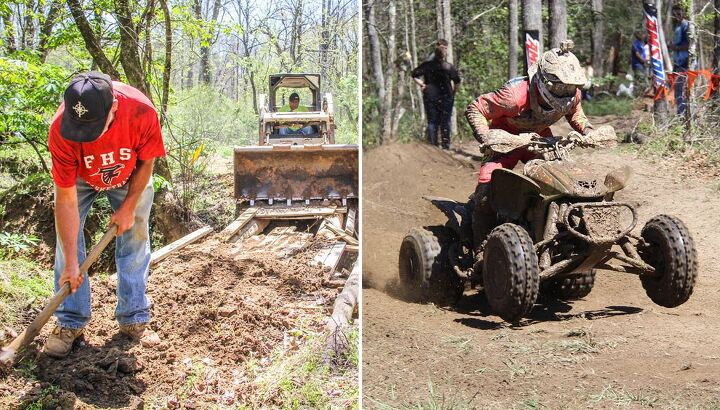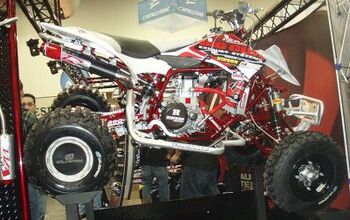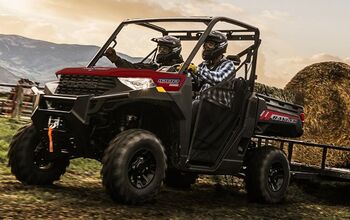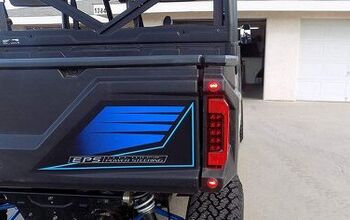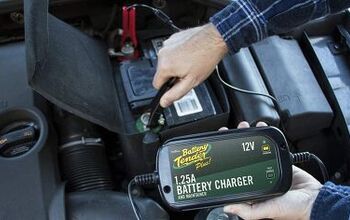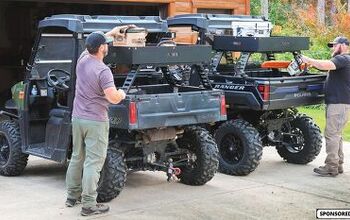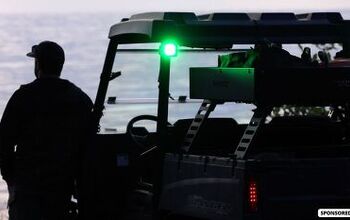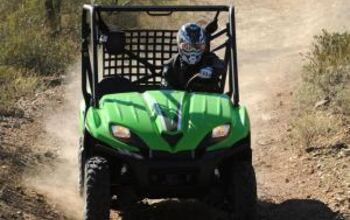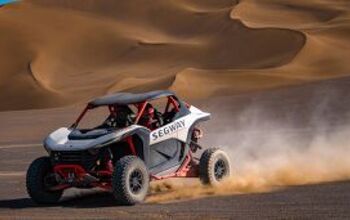Behind the Scenes of Hosting an ATV or UTV Race
Hosting an ATV or UTV race is much more involved than simply hanging some banners and throwing out a few course markers. Most ATV and UTV races take weeks of planning that culminate in a week long (or longer) effort to build and mark the actual racecourse itself. Everything from safety to scoring and even spectating is taken into consideration and we thought we’d give you the inside track on what all goes into putting on a top notch ATV or UTV race.
It’s worth noting that in a cross country or GP style event, there is typically a lot more work involved than a motocross event, for example. Most motocross tracks are considered closed courses and while the layout and some of the features might change over time, the basic flow and design of the track remains in tact. Most motocross tracks also run a host of events throughout the year so there is at least some level of ongoing maintenance occurring.
Our Honda Pioneer 700-4 was busy all day long carrying all the essential tools of the trade.
Most off-road courses for series like Best in the Desert, GNCC and other local series are only used once a year when the series comes to town. That means there is typically a lot more that goes into setting up for one of these events than a motocross race. Not to mention the overall course length of a cross country or desert race is significantly longer, which means there are more race miles that need to be prepped.
Buren Hamrick, promoter of the the Mid East Hare Scramble series (MEHS), offered to show us the ropes of hosting an off-road race, so we loaded up our Honda Pioneer 700-4 and made our way to Antioch Speedway, a 1/4-mile dirt track located just outside of Morganton, NC. MEHS is a local series that races in North and South Carolina and regularly attracts upwards of 500-600 motorcycle, ATV and UTV racers. Buren himself spent a number of years working with the GNCC series, so he knows a thing or two about hosting a top notch event.
Because most of the courses used in GP and cross country style racing are used only once or twice a year, there can be significant damage to parts of the race course that require attention. Overgrowth, washouts and other obstructions all take more time to repair but are necessary to provide a safe environment for racers.
While the track crew might have a general idea of where the course will run, one of the first things they will do is make a site lap to determine the general layout of the track and if there are any major obstacles that need to be repaired. Things like scoring shoots and start/finish lines as well as staging areas where riders gather immediately before their specific race have to be carefully planned.
Mother nature can be a course builder’s worst enemy. In this case, this culvert had nearly washed out and needed some serious attention.
At this particular event, a large culvert had all but washed away on one portion of the track, which required some serious dirt work in order to make sure no one careened off into a deep ditch. Another unique feature of this track was that the starting line was actually inside the infield of the dirt track. Racers would zig and zag their way through the infield and around the banked turns of the speedway for over two miles before disappearing into the forest.
Most cross country courses make use of large open spaces for starting lines and pit areas. The upside of having a large open space is you can put the course wherever you want. The down side is you had better get really familiar with a fence post driver. Because the plan for this particular event was to utilize the infield and the dirt track itself for the first several miles of the racecourse, we had some serious pounding to do.
Racing on and around a dirt track made for a unique race course, but it meant there was a lot of marking to be done.
Marking a course where there is no dedicated trail or race line is somewhat of an art form. You can’t think about what’s easily visible to you while standing stationary, but what is going to catch someone’s eye as they’re barreling down the track on an ATV or a Side-by-Side. For that reason, Buren and his team use a variety of different materials to mark courses and set up clearly defined lines. Keeping in mind things like spectator areas, water truck access and even the weather is where experience plays in your favor. Little things like the orientation of a fence post that holds a banner or attaching a directional arrow to a stake in such a way that if it’s windy, riders will still be able to see it are things a lot of people probably wouldn’t consider.
As you can imagine, safety is a priority so Buren and his team go to great lengths to ensure all of the race lanes are clearly visible. Large banners mark the entrances of sharp turns so racers can see them while traveling at speed. Long straightaway sections receive heavy duty twine tied between posts that is then marked with bright flagging tape so that the outer edges of each lane are clearly defined.
While banners are usually thought of as signage to promote sponsors, they come in real handy to mark specific portions of the course.
When it comes to course marking, doing it right the first time and paying attention to detail is the best way to ensure the markers themselves will make it through a long weekend of racing. As you can image, most race promoters will go through miles and miles of marking tape and thousands of course marking arrows in a season.
To add an extra element of excitement for both racers and spectators, a lot of courses have special features built into them that serve as great spectating spots and keep racers on their toes. The lagoon jump from the Lake Havasu WORCS course or the creek jumps at the Powerline Park or Big Buck GNCC races are all fun obstacles that attract a crowd.
Technical features like the water jump in Lake Havasu really liven things up for both the racers and spectators.
At this particular event, Buren created an optional line over a creek where racers could take the long way over a foot bridge or save time by jumping over the creek. The gap wasn’t anything significant, but the “creek” was really more of a ditch that, if you came up short, could swallow a man and machine whole. Not a technical jump by any means, but certainly enough to make some people think twice which is what makes it exciting.
This footbridge that was used in last year’s event needed some serious repair before it could be used again this year.
Once again, building these features required more dirt work and the bridge was in dire need of repair as it hadn’t seen any action since the MEHS event here last year. The creek jump line was actually completely new and all it took was about 30 minutes at the controls of a BOBCAT and Buren had sculpted a sweet looking jump that had us wishing we had brought a sport quad along.
If you haven’t gathered already, it takes a lot of manpower to put on an event like this. There’s a great deal of manual labor to be done in the days leading up to the event, but race day itself requires an army of support staff to keep things running smoothly. From registration to announcing, flaggers, sweepers, recovery teams and of course, someone to keep the course in tact as it deteriorates over the weekend. Buren’s series requires a 22-person team to make race day “happen” and other series like GNCC require as many as 75 people.
It takes an army of staff and volunteers to put on a top notch racing event that is both fun and safe for everyone involved.
Eric Welch serves as Buren’s right hand man, carrying a large part of the setup load during the week as well as helping to make sure things run smoothly on race day. It was Eric who graciously (and patiently) took the time to explain the hows and whys behind things like hanging banners a certain way and being mindful of how something will look to a racer traveling at speed. He’s been helping Buren run the MEHS series for a number of years and his experience shows.
While we’ve covered some of the nuts and bolts of putting on an off-road race, there is a whole other logistical piece that we could probably write a book on. Things like managing staff and equipment as well as pursuing and maintaining relationships with sponsors. Not to mention ongoing communication about updates to the series, date changes and the lot.
Although this isn’t an all inclusive look at everything that goes into putting on a race, hopefully it gives you a better idea of what is going on behind the scenes the next time you roll up to a starting line. Chances are there’s been a team of people working tirelessly for days before you arrived and they’ll be there cleaning up long after you’ve loaded up and gone home.
Growing up in Oregon, most of Seth's involvement in the powersports world was limited to what he saw in magazines and videos. Following a brief stint in the corporate world, Seth took a flying leap (literally) and moved to California to pursue a career in freestyle motocross. Though short lived, the opportunity immersed him in the industry and is now a well-established off-road writer.
More by Seth Fargher



